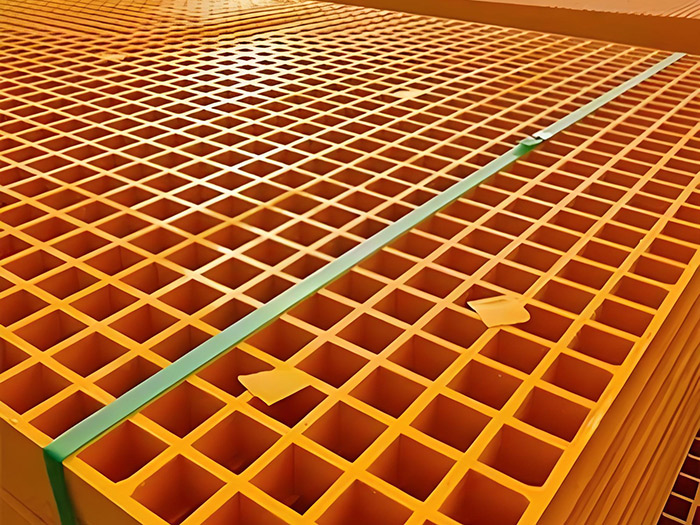FRP-Winkel für Kraftwerke: Verbesserte Haltbarkeit und Effizienz in industriellen Umgebungen
Power plants are the backbone of modern industrial infrastructure, ensuring a steady supply of energy to meet global demands. However, these facilities operate in harsh environments, exposing their components to extreme temperatures, corrosive substances, and mechanical stress. To maintain reliability and efficiency while minimizing maintenance costs, power plants increasingly rely on advanced materials like Fiber-Reinforced Polymer (FRP). Specifically, FRP angles play a crucial role in enhancing durability and performance in industrial settings. But what exactly are FRP angles, and how do they address the unique challenges faced by power plants?
What Are FRP Angles?

FRP angles, also known as fiber-reinforced plastic angles, are structural components made from a composite of fiberglass and a polymer matrix, such as epoxy or polyester resin. These materials are combined to create a lightweight yet incredibly strong product with excellent corrosion resistance, high tensile strength, and thermal stability. Unlike traditional materials like steel, FRP angles do not rust or degrade when exposed to moisture or chemicals, making them ideal for power plants.
Why Are FRP Angles Essential for Power Plants?
Power plants face numerous challenges, including exposure to high temperatures, chemical corrosion, and mechanical wear. Traditional materials like steel may degrade over time, leading to costly repairs and downtime. FRP angles, on the other hand, offer several advantages:
1. Enhanced Durability
FRP angles resist corrosion from industrial pollutants, saltwater, and acidic environments, which are common in power plants. Their high strength-to-weight ratio also means they can withstand heavy loads without bending or breaking. This durability reduces the need for frequent replacements, saving time and money.
2. Improved Efficiency
Unlike metal components, FRP angles do not conduct electricity, reducing the risk of short circuits in electrical systems. Additionally, their thermal insulating properties help maintain optimal operating temperatures, improving overall efficiency and reducing energy consumption.
3. Leichtes Gewicht und einfache Installation
FRP angles are significantly lighter than steel or concrete alternatives, making them easier to transport and install. This reduces labor costs and minimizes disruptions during construction or retrofitting projects.
4. Environmental Resistance
Power plants often operate in regions prone to extreme weather conditions, such as hurricanes or earthquakes. FRP angles can withstand high winds, UV radiation, and seismic activity, ensuring long-term structural integrity.
Addressing Common Challenges in Power Plants
Despite their benefits, power plants must overcome several challenges when implementing new materials like FRP angles. Here are some common questions and insights:
Question 1: Are FRP Angles Cost-Effective?
While the initial cost of FRP angles may be higher than traditional materials, their long-term durability and low maintenance requirements make them a cost-effective solution. Studies show that power plants using FRP components experience lower repair and replacement costs over time.
Question 2: How Do FRP Angles Perform in Extreme Temperatures?
FRP angles maintain their strength and integrity even in high-temperature environments, such as those found in thermal power plants. Their thermal stability ensures they do not expand or weaken under heat, preserving structural reliability.
Question 3: Can FRP Angles Be Customized for Specific Applications?
Yes, FRP angles can be tailored to meet the exact specifications of power plant components, including size, shape, and reinforcement patterns. This flexibility allows engineers to optimize performance for unique industrial applications.
Sharing Best Practices for Implementing FRP Angles
To maximize the benefits of FRP angles in power plants, facility managers should follow these best practices:
– Conduct thorough material testing to ensure compatibility with existing systems.
– Work with experienced FRP manufacturers who understand industrial requirements.
– Implement proper installation protocols to avoid damage during handling.
– Perform regular inspections to identify any signs of wear or degradation early.
Schlussfolgerung
FRP angles are a game-changer for power plants, offering superior durability, efficiency, and environmental resistance. By addressing the unique challenges of industrial environments, these composite components help facilities operate reliably while reducing long-term costs. As the demand for sustainable and high-performance materials grows, FRP angles will continue to play a vital role in advancing the future of energy infrastructure.
For power plant operators and engineers looking to enhance their facilities, FRP angles provide a smart, reliable, and cost-effective solution. By embracing this innovative technology, industries can ensure safer, more efficient, and more sustainable energy production for years to come.







